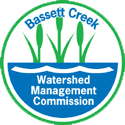News
Bloomington Public Schools Improve Safety and their Bottom Line with Anti-icing Strategies
Wed, Feb 13, 2019Making sure kids are safe at school has always been a top priority for Craig Nordstrom. A Bloomington resident since 1975, Craig joined the facilities staff at Bloomington Public Schools in the early ’90s. Throughout his career, he focused on finding cost-effective ways to ensure the safety of students and staff across the 17 buildings that comprise the Bloomington Public School system.

In 2010, Craig attended a Winter Parking Lot and Sidewalk Maintenance training sponsored by Nine Mile Creek Watershed District (NMCWD). After the training, he realized that the school’s system of salting sidewalks was not only ineffective but also contributing to the major chloride issues in their watershed. Nine Mile Creek is impaired for chloride, and a 62% reduction of salt applications — including road and sidewalk salting — is needed for the creek to become healthy again.
Granular salt and sand is most commonly used by businesses to melt ice and increase traction. Prior to 2010, Bloomington Public Schools used more than 200 tons of salt/sand mixture annually to treat icy surfaces. The salt/sand mixture was stored beneath a tarp on school grounds, leaving it vulnerable to erosion in wet weather. When sand and salt washes down storm drains and into local rivers and lakes, they cause a dangerous build up of chlorides in waterways.
Brining offers an efficient solution
Anti-icing liquid and brining are growing in popularity as a more efficient alternative to granular salt and sand. Anti-icing liquid can be used in much smaller quantities before a winter storm to prevent ice from forming on roads and sidewalks. As a result, snow is easily removed by plows or shovels, and fewer chlorides build up in snowmelt.
The City of Bloomington uses a brining system on roadways to facilitate snow removal on their roadways. As early as 48 hours before a winter storm, the city applies anti-icing liquid to the roads.
After learning about this appealing alternative to granular salt, Craig decided to implement a similar winter maintenance program at Bloomington Public Schools. He occupied a unique position as both an employee of the public school system and the chair of the City of Bloomington’s planning commission. Thanks to Craig’s connections in the city, a partnership soon emerged that allowed the schools to tap into the city’s brining infrastructure.
With the support of two Cost-Share grants from the Nine Mile Creek Watershed District, Bloomington Public Schools purchased equipment to transition from salting and sanding to pre-storm liquid anti-icing. As a result, they reduced their use of chlorides by more than 50%.

Tackle winter with the right tools
These days, there’s very little use for granular salt on Bloomington School grounds. The positive change is clearly visible to Erica Sniegowski, Program and Project Manager at the NMCWD and parent of two students at Bloomington Public Schools. “As a parent, I am incredibly impressed every time I pick up my kids here. The sidewalks are clear, safe, and there’s never huge piles of salt.”

Few homeowners realize that liquid anti-icing is an option for their properties. Now retired from his position at Bloomington Public Schools, Craig still uses a small, liquid tank sprayer to prevent ice build-up on his own steep driveway. In five years, he has applied less than five cups of brine. You can shop for anti-icing liquid and hand sprayers at many big box stores.
While brine still isn’t environmentally safe, using it in place of granular salt is a small step in the right direction. Beef up your winter repertoire with a variety of snow removal tools. Using the right products and equipment can reduce the environmental impact of your personal winter maintenance on the environment, especially lakes and rivers.
Tips for replacing granular salt with anti-icing liquid
Use a small amount. Over applying liquid anti-icing liquid creates a slip hazard.
Apply it to dry pavement up to 48 hours before the storm hits.
Learn which deicers work at colder temperatures. Learn more from this chart created by NMCWD.
Remember, no anti-icing liquid is environmentally friendly. Snow removal is always the best way to protect the environment.
Expand your tools for snow removal
Sweep. Light snow can be easily brushed away with a broom.
Scrape. A flexible ice scraper will help you clear ice faster without straining your back.
Blow. A leaf blower is a surprisingly easy way to clear powdery snow off your sidewalk.

